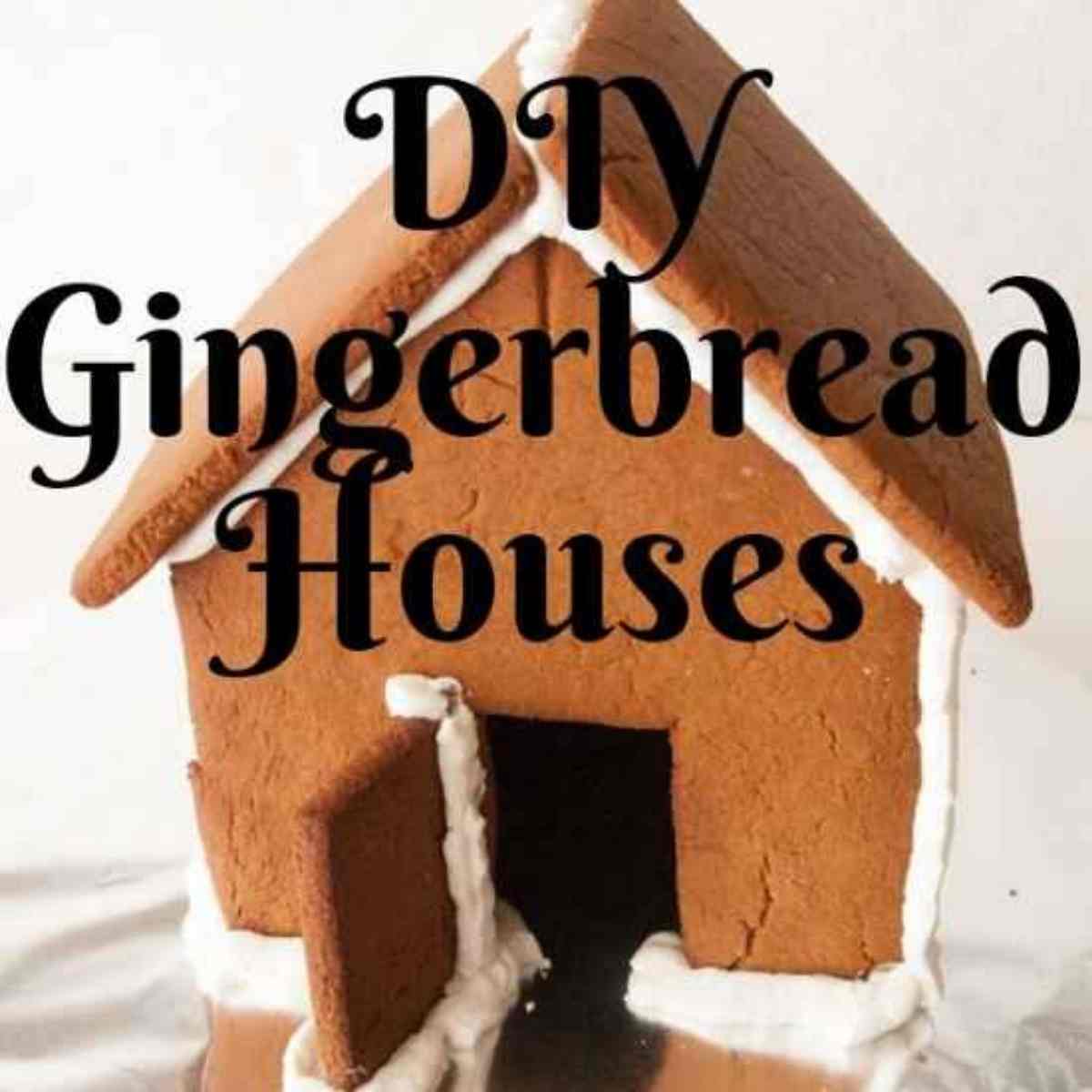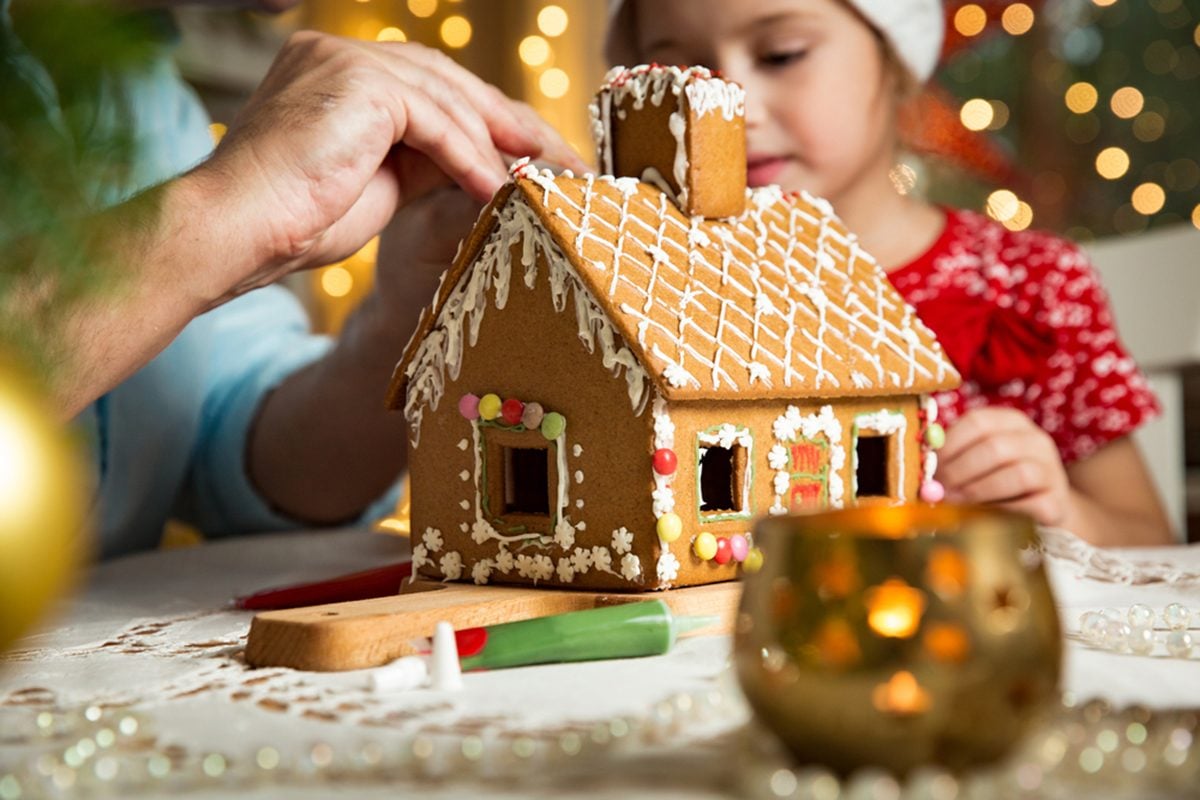Table Of Content

The rolled out dough should fit inside a half sheet baking sheet. If the dough is soft, then I recommend rolling it out between two pieces of parchment paper (Image 23). Add the flour a little at a time, and mix it in by “pulsing” (turning on the mixer in short bursts) the stand mixer on low speed (Image 9). This will prevent the flour from flying everywhere, and the dough from being overmixed. If you don’t have a stand mixer, you can make this with a hand mixer as well. However, you will need to make half a batch at a time and be gentle with incorporating the flour to make the dough.
You can download your free gingerbread house templates by clicking the links below:
The dough only needs to bake for about minutes. You'll know it's ready when the edges are slightly browned, and the centers are set. When your pieces are all cut out, carefully lift them with a spatula and place them onto your prepared baking sheet.
Top 10 Recipes
The amount of dough it makes is perfect to use with this gingerbread house template. For the base of the gingerbread house choose something flat and sturdy. You can use a cardboard cake board, a large platter or plate, a pretty cookie sheet, a cutting board, or a cake stand. The thing I love about making gingerbread houses is that there is no right or wrong way to do it.
free printables
Raw egg whites don’t have a great shelf life. This is why my recipe for royal icing for gingerbread house uses meringue powder. It’s more shelf-stable and safe to eat even after a few days at room temperature. Once the dough is chilled, it’ll be easier to roll out.

Here’s everything you need to know about how to make a gingerbread house. Fold the house together, and tape the edges and roof on. Look for the more specialized items in the cake decorating section of your local craft store; see notes below. Nikki is the creative force behind Tikkido.com. She's been featured on Food Network's Holiday Gingerbread Showdown and is the author of Gingerbread for Beginners. She loves baking sweet things (but eating savory things), crafts, public radio, Irish dancing, and geekery of all sorts.
Decorate happy little gingerbread people to complete the scene. You can use leftover royal icing to pipe small details or follow this step-by-step guide of basic decorating techniques for extra-festive gingerbread folks. Stand up two walls at a time so they support each other. Starting with an end wall and side wall, pipe a thick L-shaped line of icing on the prepared base to secure the bottoms of the two walls.

Support
For me, these stuffed semolina pancakes are wrapped up in nostalgia and family. Festive recipes that bring the flavor, without breaking your budget.
Gingerbread House Cottage with Trees
Sure, you could do the whole thing in one day, but that may be stressful. This is supposed to be a fun activity, after all. I love using my recipe for gingerbread house icing with my gingerbread house recipe and this template.
7 Tricks From A Gingerbread House Champion - Chatelaine - Chatelaine
7 Tricks From A Gingerbread House Champion - Chatelaine.
Posted: Mon, 02 Dec 2019 08:00:00 GMT [source]
Bake for a further 3–5 minutes, or until the gingerbread is firm and golden and the sweets have melted and filled the panes, but are not bubbling. Remove from the oven and leave on the baking sheets until cold. To make things even easier for you, this year I've prepared printable templates that you can download and use to make your own A-frame gingerbread houses.
Due to the strong flavors in gingerbread dough, vanilla isn’t necessary. You can use white sugar instead of brown sugar, but I love the additional molassey flavor and dark brown color it lends to the dough. Pipe a thick line of icing on three sides (two short and one long side) of a side wall piece of the house. Then, lay out the pieces to provide a clear view of each and help you visualize the assembly process once you've rolled out your dough.
Apply the glue on the back of the printed template. Remember to apply the glue outside of the template line AND inside (Image 17). The mixture might look curdled at this stage and that’s OK. Temperature differences in the ingredients can lead to this, but the dough will come together when the flour is added. Next mix in the vanilla and molasses (Images 7 & 8), until mixed through. The next step is to add the eggs (Image 6).
This post is everything that you need to know on how to make a gingerbread house and I’m here for support and troubleshooting if you need it. Here’s an easy-to-use template for your gingerbread house. Using this guide, pull out your ruler and some paper or cardboard to transfer the measurements. Trim each template piece with scissors or a utility knife and set aside. Below are a series of different gingerbread house templates for any style and size.
Mix until you get a smooth, thick royal icing mixture (Image 34). The correct consistency should be spreadable but stiff, so that the royal icing will not “run” or spread, but still easily pipeable (Image 35). Any remaining space can be used to cut out the chimney parts, and other gingerbread shapes you like. Use dough thickness guide to make it easier to roll out the dough to an even thickness. Do not knead the dough – the way you would with bread dough.
Remember to print out the template to make cutting out your pieces easy. If you don’t think you’ll use meringue powder or cream of tartar for anything besides this recipe, look for these items in the bulk section of your grocery store. To do the roof, pipe icing all along the top edges (all of the top edges—front, back, and both sides). Also pipe royal icing along the middle to join the two parts of the roof. My advice is to find a cooler part of your home and allow the icing to harden there.
As the royal icing dried, it gently dripped off the sides and looked like snow. For the icing, a stand or hand mixer is necessary to get the right texture to hold the house together. The icing is ready when it is smooth, glossy, and holds a stiff peak.

No comments:
Post a Comment